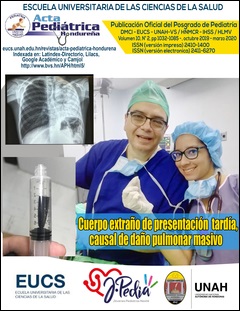Clinical-Epidemiological Characterization of perinatally exposed HIV patients. Mario Catarino Rivas National Hospital
DOI:
https://doi.org/10.5377/pediatrica.v10i2.10079Keywords:
HIV, Vertical transmission, ARVAbstract
Background: In countries with limited resources, childhood HIV infection has alarming dimensions. More than 90% of children living with HIV in developing countries were infected by transmission from mother to child during pregnancy, during childbirth or during breastfeeding. In order to reduce the number of HIV-infected children, emphasis has been placed on prevention programs for vertical transmission. Objective: To characterize clinically and epidemiologically the perinatally exposed HIV patients treated at the Mario Catarino Rivas National Hospital between January 2018 - June 2019. Patients and Methods: Quantitative, observational, descriptive study; The review of 42 clinical records was carried out, a questionnaire of 23 open and closed questions was applied, evaluating clinical and epidemiological variables. Results: 85% of the mothers knew the diagnosis of being HIV positive, 66% diagnosed before pregnancy , 80% on ARV treatment, 26% with undetectable viral load, 78% ended their pregnancy via caesarean section, 53% were categorized as high risk, 85 % received ARV therapy for 4 weeks, HIV incidence was 4.7%, 2 of 42 patients, 85% of patients did not receive breastfeeding, 19% are lost to follow-up, 88% received prophylaxis with TMP-SMX. Conclusions: The main protective factor in perinatal transmission of HIV is maternal viral load not detectable.
Downloads
727

